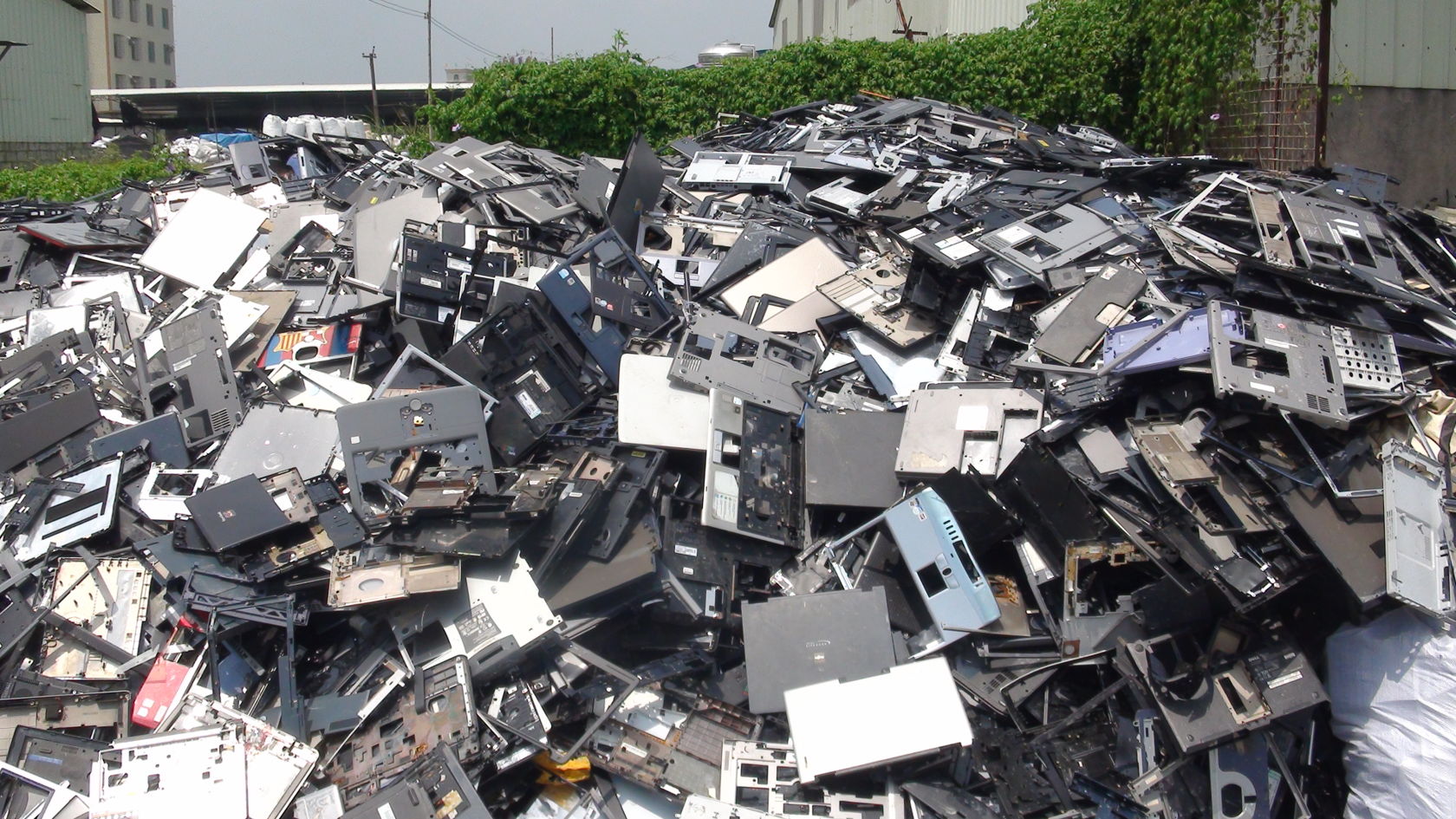SUSTAINABILITY
Liam: The iPhone-Recycling Robot
Liam: The iPhone-Recycling Robot
With the worldwide rise in mobile phone usage (and the constant temptation to upgrade to the latest iPhone or Samsung Galaxy), producers and consumers both face a growing problem: what to do with last year's model
11 April, 2016
Not sure how to dispose of their used smartphones, consumers too often throw them away and waste materials which could otherwise have been recycled or reused in an environmentally sustainable way.
These devices, even though they contain aluminium and other materials that can be easily recovered and reused, are commonly discarded with the rest of the rubbish and end up on landfill sites. Less than a sixth of all "e-waste" is presently recycled or reused, and almost a third of this waste is generated in either the United States or China.
In 2014, the United Nations estimated that over 41.8 million metric tonnes of electrical and electronic equipment was improperly disposed of worldwide. Per capita, the worst offenders are in Europe: Norway, Switzerland, Iceland, Denmark, and the United Kingdom round out the top five. Unbeknownst to most consumers, the metals and plastics being thrown into the bin can be incredibly valuable: the estimated 16,500 kilotonnes of iron, 1,900 kilotonnes of copper, 300 metric tons of gold, and other materials (like aluminium) that wound up as e-waste in 2014 have an estimated combined value of $52 billion USD.
In 2014, the United Nations estimated that over 41.8 million metric tonnes of electrical and electronic equipment was improperly disposed of worldwide. Per capita, the worst offenders are in Europe: Norway, Switzerland, Iceland, Denmark, and the United Kingdom round out the top five. Unbeknownst to most consumers, the metals and plastics being thrown into the bin can be incredibly valuable: the estimated 16,500 kilotonnes of iron, 1,900 kilotonnes of copper, 300 metric tons of gold, and other materials (like aluminium) that wound up as e-waste in 2014 have an estimated combined value of $52 billion USD.

Imported laptop housings pile. Guiyu, China. Photo by Basel Action Network.
Apple, whose new iPhones and Mac computers create a media sensation every year, recently unveiled what it believes will be a better solution: a robot named "Liam" that can disassemble old iPhones and remove all of the valuable components, allowing them to be either reused or recycled.
The production of Liam is intended to address criticism that iPhone components are almost impossible to remove from their cases for reuse. An iPhone will typically contain quantities of many valuable materials, including tungsten and silver, which can be reused once they are separated from the iPhone case.
The production of Liam is intended to address criticism that iPhone components are almost impossible to remove from their cases for reuse. An iPhone will typically contain quantities of many valuable materials, including tungsten and silver, which can be reused once they are separated from the iPhone case.
Liam, which has been in development for almost three years, will initially be asked to focus on the iPhone 6. A wider range of iPhones will be added to its capabilities in the future. According to Apple, Liam is able to disassemble an iPhone and recover its aluminium, gold, cobalt, tin, tungsten, and silver components in 11 seconds.
Speaking at a launch event in California, Lisa Jackson, Apple's vice president of environment, policy and social initiatives, explained that Liam is intended to address the long-standing problem of low recycling rates within the tech industry.
Speaking at a launch event in California, Lisa Jackson, Apple's vice president of environment, policy and social initiatives, explained that Liam is intended to address the long-standing problem of low recycling rates within the tech industry.
Ultimately, our goal is to create breakthroughs that allow us to use those high quality materials in our own products, because reuse and recycling is so important. And that's where you can come in. With Apple Renew, you can recycle your devices easily and quickly and in a way that's safe for your data and safe for the planet. All you have to do is take them into an Apple retail store.
Liam, a robotic system made up of 29 robotic modules, is based on a single site near Apple's headquarters in Cupertino, California. A second Liam will be established in Europe to recycle iPhones from outside the United States. If Liam proves successful, many more will be needed in future: Apple sold more than 230 million iPhones in 2015. At his present rate of work, Liam will only be able to disassemble a few million each year.
Environmental groups like Greenpeace, who applauded the attempt to limit the number of phones that go to landfill, have cautiously welcomed Liam.
Environmental groups like Greenpeace, who applauded the attempt to limit the number of phones that go to landfill, have cautiously welcomed Liam.
If it's easy for a robot, that's great… but making it easier for a human, who will be doing most of this, is part of the solution.
Cook also noted that Apple, as an industry leader, should make more use of recycled metals in their products and make it far simpler to dissemble their products at the end of their lives: "a lot of the sector has followed their lead because they've helped change the supply chain," he said.
Through their choice of materials, Apple has already taken a major step in this direction: the aluminium that goes into Apple's signature products, including the iPhone, is infinitely recyclable. The company has also set up take-back programs to keep materials out of the landfill: every Apple Retail Store in the world accepts used Apple products from consumers for responsible recycling, and even offers credit toward new models in exchange. The company has also set up recycling programs (such as collection events) in 99% of the countries where it sells products. In 2014, Apple collected 40,396 metric tonnes of e-waste through these programs. Compared to the overall amount of e-waste generated that year, however, there is clearly much work still to do.
Whether Liam makes a significant impact on the recycling rates for iPhones may not be seen for some time. Kyle Wiens, the co-founder of iFixit, believes that as many older iPhones are sold on to Africa and China placing recycling robots in the USA and Europe is not going to fix the problem: "it's notable that they [Apple] are talking about this, but unless you get one of these robots inside every recycler in the world, it's not going to have an impact."
Speaking for Apple, Jackson said that their design approach would not change but that they are committed to finding better ways to deconstruct their devices and recover materials that can be reused.
Speaking for Apple, Jackson said that their design approach would not change but that they are committed to finding better ways to deconstruct their devices and recover materials that can be reused.
Banner photo by BGR.

